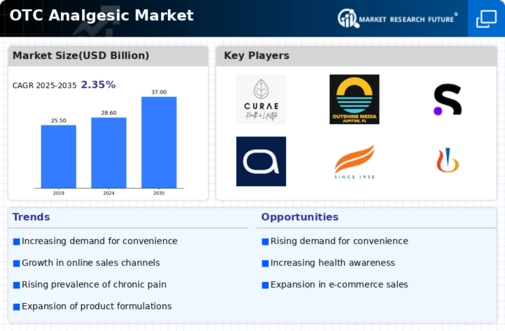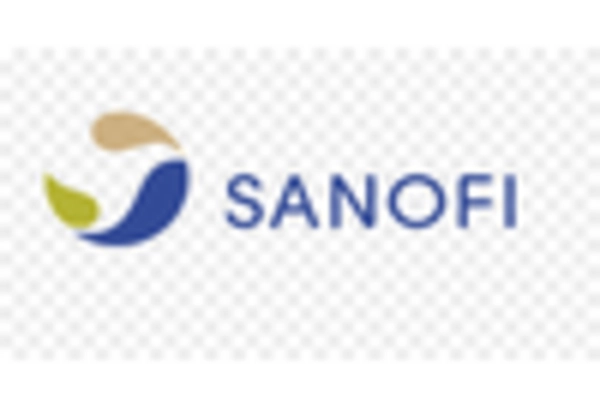Expansion of Retail Channels
The expansion of retail channels, particularly in the e-commerce sector, is transforming the OTC Analgesic Market. With the proliferation of online shopping platforms, consumers now have unprecedented access to a wide range of OTC analgesics. This shift not only enhances convenience but also allows for price comparisons and access to product reviews, which can influence purchasing decisions. Recent data indicates that online sales of OTC analgesics have increased by over 30 percent in the past year, reflecting a significant change in consumer behavior. As more retailers invest in their online presence, the OTC Analgesic Market is likely to benefit from increased visibility and accessibility. This trend may also encourage competition among brands, leading to innovations in product offerings and marketing strategies, ultimately enhancing consumer choice.
Innovations in Product Formulations
Innovations in product formulations are driving advancements within the OTC Analgesic Market. Manufacturers are increasingly focusing on developing new formulations that enhance efficacy and reduce side effects. For instance, the introduction of topical analgesics and combination products has expanded the options available to consumers. Recent market analysis indicates that topical analgesics have gained popularity, with sales growing by approximately 15 percent over the past year. These innovations not only cater to diverse consumer preferences but also address specific pain management needs. As research and development continue to advance, the OTC Analgesic Market is poised for further growth, with an emphasis on creating products that are both effective and safe for consumers. This focus on innovation is likely to attract new customers and retain existing ones, thereby solidifying the market's position.
Increasing Prevalence of Chronic Pain
The rising incidence of chronic pain conditions, such as arthritis and back pain, appears to be a primary driver for the OTC Analgesic Market. According to recent estimates, nearly 20 percent of adults experience chronic pain, leading to a heightened demand for accessible pain relief solutions. This trend is likely to continue as the aging population grows, with older adults being more susceptible to chronic pain. Consequently, the OTC Analgesic Market is witnessing a surge in product offerings tailored to manage these conditions effectively. The convenience of OTC analgesics allows consumers to self-manage their pain without the need for prescriptions, further propelling market growth. As awareness of chronic pain management increases, the OTC Analgesic Market is expected to expand, catering to a demographic that seeks immediate and effective relief.
Growing Preference for Self-Medication
The growing preference for self-medication is a notable trend impacting the OTC Analgesic Market. As individuals increasingly seek to manage their health independently, the demand for OTC analgesics has surged. This trend is particularly evident among younger demographics, who are more inclined to utilize OTC products for minor ailments rather than consulting healthcare professionals. Market Research Future suggests that self-medication practices have led to a rise in OTC analgesic sales, with an estimated increase of 7 percent in the last year alone. This shift towards self-care reflects a broader cultural change, where consumers prioritize convenience and immediate relief. The OTC Analgesic Market is likely to continue evolving in response to this trend, with manufacturers focusing on developing user-friendly products that cater to the self-medicating consumer.
Rising Consumer Awareness and Education
Consumer awareness regarding pain management options has significantly increased, influencing the OTC Analgesic Market. Educational campaigns and health initiatives have empowered individuals to make informed choices about their health, particularly concerning pain relief. This heightened awareness has led to a greater understanding of the various OTC analgesics available, including non-steroidal anti-inflammatory drugs (NSAIDs) and acetaminophen. As consumers become more knowledgeable about the benefits and risks associated with these medications, they are more likely to opt for OTC solutions over prescription alternatives. Market data indicates that the OTC Analgesic Market has seen a steady growth rate of approximately 5 percent annually, driven by this trend. The ongoing emphasis on self-care and preventive health measures suggests that consumer education will continue to play a pivotal role in shaping the market landscape.


















Leave a Comment